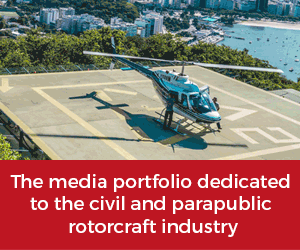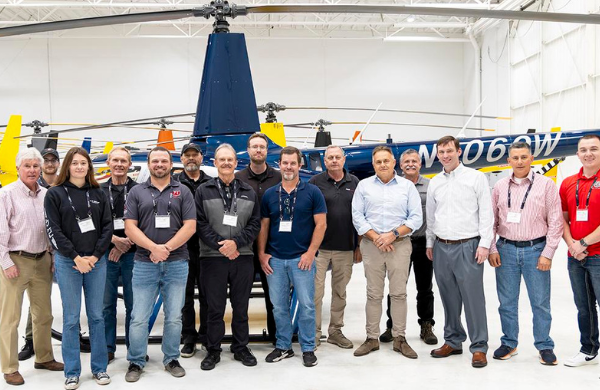As a young RAF helicopter pilot, Sean Reynolds was told that flying and airmanship was 90% good habit and 10% panic. Now an instructor, he shares what he has learned from nearly 40 years in the hot seat.
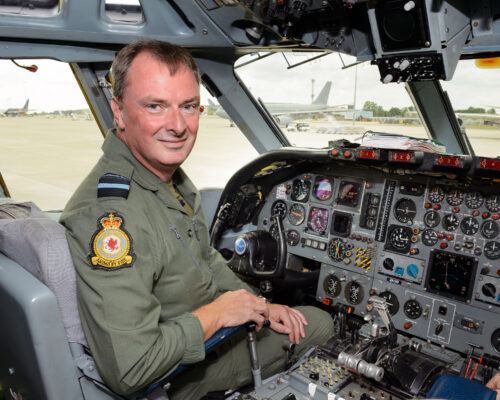
AOC 2 GP – AVM Reynolds flight in VC10 of 101 Sqn, RAF Brize Norton
Wisdom from His Instructor
It is now almost 40 years ago since I was taxiing out at RAF Church Fenton on one of my first instructional trips as a student in a Jet Provost TMk3. Before taking off, my instructor imparted some words of wisdom that seem to have stood me in good stead ever since.
He had enjoyed a stellar career, flying a number of fast jets from Canberras and Hunters through to Phantoms and Jaguars. Most notably, he had earned an Air Force Cross (AFC) on his first tour for recovering a Canberra back into RAF Changi, Singapore.
With the elevator and aileron control runs severed – and the ejection sequence started but failing to fire – he had guided the aircraft back purely on trims.
The 90% Habit and 10% Panic Rule
As we bumped along over the taxiway lights, he said to me something along the lines that flying and airmanship was 90% habit and 10% panic and that if the habit was good then the panic was not so bad.
I think the point that he was trying to make on his teenage and very impressionable apprentice, was that if I worked hard to assimilate the world-class training I was about to get, and constantly review my performance, then I might turn into a reasonable pilot.
Strangely Calm in High-Stress Situations
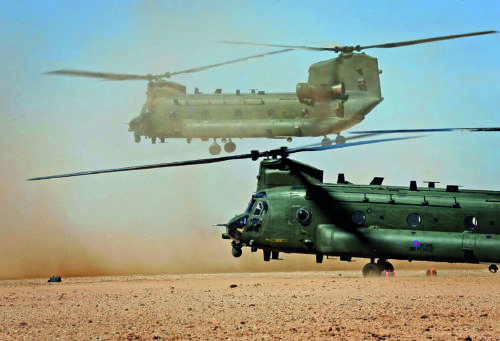
Desert Storm: Sean Reynolds served in the Gulf War. Photo: MOD Crown Copyright
Night-time Mission in the Gulf War
Fast forward seven years and I am at the controls of a Special Forces Chinook HC1, deep inside Iraqi airspace, at night, in the opening week of the Gulf War (1991).
We are on our way to a point just on the outskirts of Baghdad, not knowing whether we will see the sunrise in a little over eight hours – the mission analysis having suggested that this could be a one-way mission. This should have been one of the most nerve-racking experiences of my life, but I felt strangely calm and relaxed as we skimmed across the desert floor at about 30 to 40 feet and 130 knots. This was my place, and this was what I did.
Operating “In the Zone”
We had spent years training for this type of mission and, despite the threat of the looming Baghdad Super Missile Engagement Zone, it could have been any other flight on any large exercise. As a crew, and as a formation of two, we were in the zone. We were operating at high performance. Only the necessary was said and much of it seemed automatic. This was good habit. Clearly, we did make it back and I have since flown on countless other high-risk missions around the world.
Teaching and Training the Next Generation
This habit, these automatic behaviours, has minimised the panic on a number of occasions and continues to do so today – even in the more benign environment of instructing PPL students on light helicopters and aircraft.
Part of my passion for teaching people to fly is to try and pass on these good behaviours and instil this good habit. A lot of the modern thinking in pilot training is linked to pilot competencies. But what is it and what is the best way to pass it on to the next generation of helicopter pilots?
Mental Models and Heuristics
The Role of Heuristics in Decision-Making
We can start by asking what is a habit and how do we form them. Most of us possess a fixed model of the world in our heads. In the language of psychology, these mental models are known as “heuristics”. They are like rules of thumb – simple problem-solving strategies that allow us to make sense of our surroundings. These rules can be remarkably useful, especially when we have to make a decision quickly and without all of the information. In aviation, we also talk of them as biases.
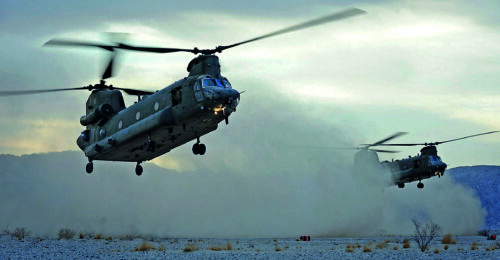
Flight of two in the zone. Reynolds flew helicopters in Iraq. Photo: MOD Crown Copyright
Balancing Information and Heuristic Shortcuts
Think of a task that you might have flown a number of times before. Instead of starting the day balancing off all of the available information, you take a shortcut.
“I did it this way yesterday and it worked so I will do it the same way today.”
It’s a simple behavioural response and one that stops you being overwhelmed by all of the information that you have to take in every day. This is where good training comes in so that the use of these heuristics have a tried and tested basis on which to work most of the time. But what if something is different today that you might not have thought of or noticed?
Although generally helpful, these heuristics can sometimes undermine our ability to respond to a situation flexibly. They can mean that we can get stuck in a poor behavioural habit that can be difficult to get out of.
Cognitive Biases and Decision-Making
Insights from Kahneman and Tversky
In the early 1970s, two psychologists, Daniel Kahneman and Amos Tversky, set out to understand how these heuristic shortcuts influence people’s behaviour. Over the next few decades, they would uncover dozens of heuristics and how they can affect people’s decision-making – both positively and negatively.
Kahneman and Tversky found that we are more influenced by a potential loss than a potential gain. We also tend to judge the likelihood of events based on how easily we can imagine them – an example of expectation bias.
The more available a piece of information is to our minds, the more important it seems. If we see what we think we have imagined in our mental model, even if it is not reality, then we can then fall into the trap of confirmation bias.
The Influence of Bias on Decision-Making
Above all, these mental models can stand in the way of effective decision-making and risk trapping us in outmoded ways of doing things. They discourage us from thinking creatively about the behaviours we need when we have new and difficult problems to solve or situations to deal with. They can lead to poor habits, particularly if we fall into the potential trap of “we have always done it this way” and then discover “this way” doesn’t work in the new situation.
So how can we create the good habits to enable us to think flexibly and minimise these heuristic traps – how can we minimise the panic?
Trademark Behaviours for High Performance
Consistent Habits of High-Performing Teams
Let’s go back to the picture I painted earlier. How did we come to be able to perform well in that moment of flying deep into enemy territory as a two ship of Chinook helicopters at night at very low level in an unknown and high threat environment?
Surely what we need is a high degree of training and competency to form these habits. Those of us who teach and examine will be familiar with Crew Resource Management (CRM) and the set of pilot competencies on which much of this is based. In simple terms, there are nine pilot competencies that are split into technical and non-technical. Self-evidently, the technical competencies, of which there are three, involve flight path management, use of automation and technical knowledge.
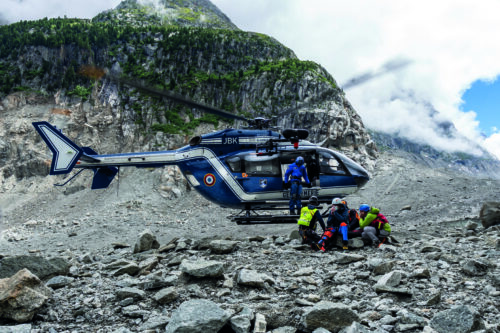
Shared endeavour: good habits are underpinned by training and teamwork
This is where talent, high quality training, solid technique and the use of standard systems of work will really reinforce good habit. In all of this, I would argue that is where training becomes the foundation of this good habit and minimises some of the heuristic traps.
But what about when you find yourself in a situation that you might not have specifically trained for? What do you do when the controls become severed, or you are flying into a situation when all of the odds are stacked against you?
Non-Technical Competencies
I would suggest that this is where the non-technical competency habit needs to be really good. The non-technical competencies are clearly all to do with some of the less tangible human behaviours – situational awareness, leadership and teamwork, communication, workload and stress management, problem-solving and decision-making.
There is at least an article on all of these to examine how these competencies form the really good behavioural habits. That said, in the first instance, I would offer from my own personal experience that really high-performing pilots and crews form some trademark, non-negotiable and consistent behaviours that provide a wrapper for these non-technical competencies. This is what can really minimise the panic.
For example, it was obvious to me when I arrived on the Special Forces Flight of No 7 Squadron, as an ab initio pilot, that it had its own unique culture. It did things differently from the rest of the Chinook Force at that time. What I know now is that high-performing teams have consistent trademark behaviours.
Jake Humphrey and Professor Damian Hughes reference this in their 2021 book, High Performance. High performers have a handful of consistent trademark behaviours and they stick to them.
“Raw talent and ability might be the spark of high performance. But these trademark habits are what keep the fire burning,” say the authors.
Trademark habit 1 – Meticulous Planning and Debriefing
The first of these obvious and consistent habits was the meticulous planning, briefing and debriefing we did for every sortie. I quickly learnt – as many a military officer has noted – that the value was in the planning and not necessarily the plan.
We had a rule of thumb that we would spend at least three times as much time in the planning than we would in the actual flying. We would then try and “What If?” every eventuality that we could think of and what would be our consequent actions if any of these potential scenarios occurred. This could be anything from enemy threats to weather and aircraft technical problems.
Which is where some of the creativity would come in, but we would also try and keep the potential responses simple. Moreover, we would try and identify the triggers for these responses.
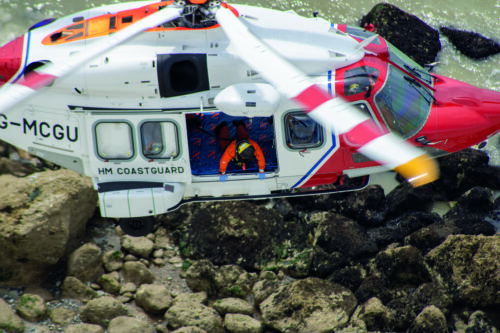
Mind over matter. High quality practice and preparation are vital.
This was very similar to what we now term “threat and error management” and should be central to any pre-flight planning. To cap it off, we would forensically debrief every sortie to see what we could learn and incorporate into our business going forward. Interestingly, though, this was a very positive experience as we would first of all look for what went well and try and build this into the “habit”.
Trademark habit 2 – Total crew concept
The next trademark behaviour was what we termed “total crew concept”. Although the aircraft captain had overall command responsibility, every person on the crew had a leadership role.
The gradient was incredibly flat, to the point that if you closed your eyes and listened to the intercom you might find it difficult to know what the crew positions were.
I once had a guest, who was an experienced aviator, ride in my cockpit jump seat. Given the high tariff nature of the flight we were conducting, he was amazed at how relatively quiet the intercom was and how we seemed to anticipate the needs of each other before it happened. We were in each other’s minds.
This, I believe, comes from constant high-quality practice, training and preparation. We always came to the flight with our minds in the right place.
Trademark habit 3 – Humility
The final trademark behaviour was humility. One of the more senior members of the organisation said to me early on, “You can have the most amazing reputation, but you are only as good as your last flight.” As I became more senior, I always tried to remember this.
We also encouraged and recognised when someone put their hand up and admitted quickly if they had made an error or mistake. That way we could all pitch in and try and help mitigate the potential consequences. Additionally, we could all learn from another’s mistake. We never blamed if you had the courage to stand up and admit an error.
Again, 30 years later, this is now well known as a “just culture”. We all make mistakes. The trick is to admit to them quickly, so others can help and learn, and to try to never repeat the same mistake twice.
This is where education, rather than training, comes to the fore. We train for certainty but educate for uncertainty.
Sowing the Seeds of Safe and Effective Flying
Building Good Habits
Thirty-eight years after the seed was first sown, I am convinced that safe and effective flying is built around good habits. Much of this comes from high quality training and safe and tried and tested robust systems of work.
Most of the time this will protect us from our human fallibilities and our need to use heuristics to cope with the pressures of everyday activities. That said, to perform at a high level and to overcome the unknown and unforeseen then, we need to take the good habits to the next place.
This is where a handful of consistent and non-negotiable trademark behaviours really allows you to up your game in the more complex and ambiguous situations.
Lessons Learned from a Long Aviation Career
I learnt a number of these habits early in my flying career and have made them things that I try and embed into every flight. By planning, preparing, briefing and debriefing; by staying competent with high-quality practice and trying to learn from every mistake (however small); by never trying to make the same mistake twice and by taking ownership of the consequences; by constant reflection and self-evaluation.
Then the panic, more often than not, does not seem so bad.
This article was originally published in the Dec ’22/Jan ’23 issue of RotorHub International and was a finalist for The Best Safety, Training & Simulation Submission award at the 2023 Aerospace Media Awards
 About the Author
About the Author
Sean Reynolds was commissioned in the Royal Air Force in 1984. He spent the majority of his air force flying career in Chinooks. He was awarded the Distinguished Flying Cross (DFC) while flying Special Forces operations in the first Gulf War.
He was created an Officer of the Order of the British Empire (OBE) for service in Afghanistan in 2003, an award advanced to Commander (CBE) in 2013. He was created a Companion of the Order of Bath (CB) in 2019. Since retiring from the RAF as an Air Marshall, he remains active teaching helicopter flying to PPL level at an airfield in the south of England.


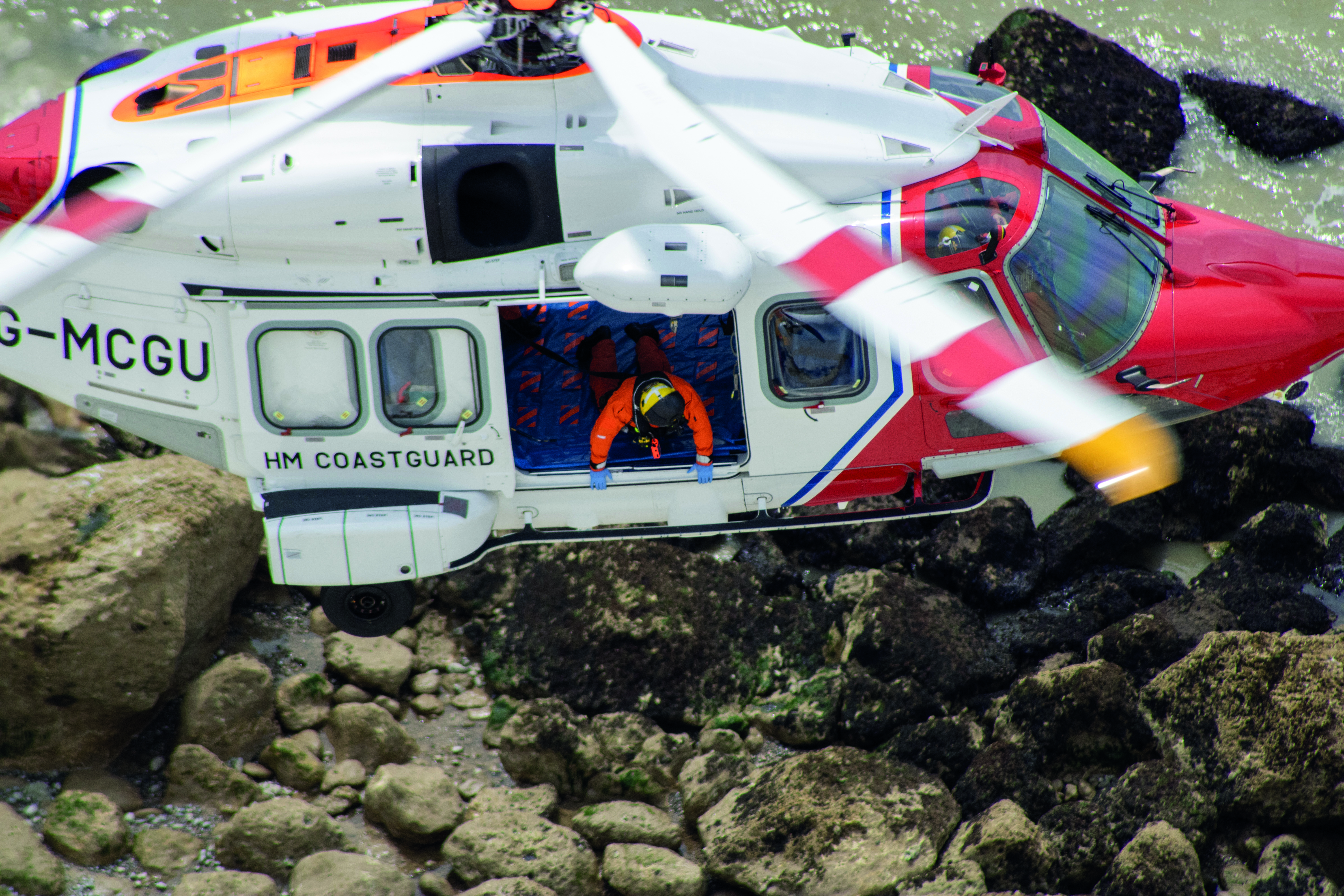
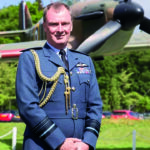 About the Author
About the Author